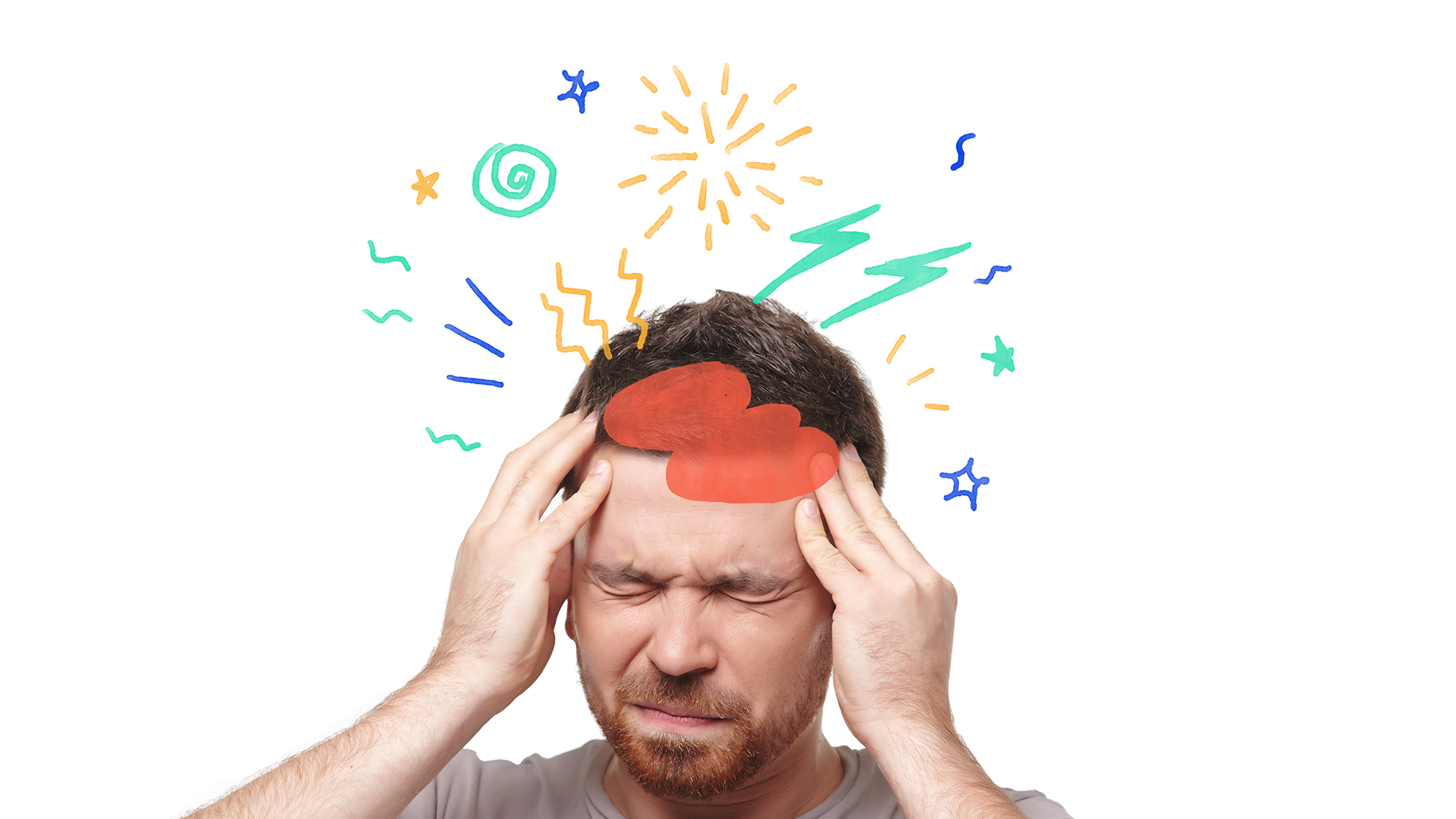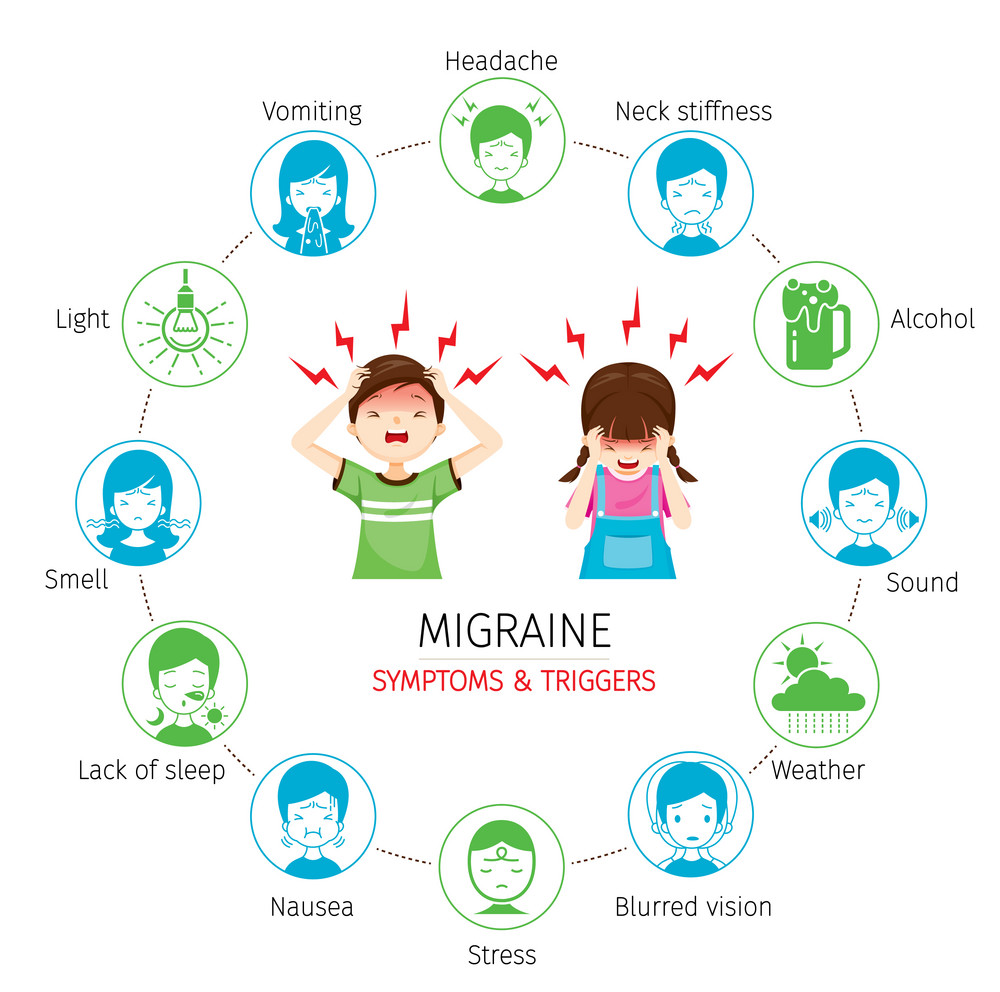Migraines, More Than Just a Headache
When most people hear about migraines, they think of a severe headache. However, a headache is only one symptom of a migraine. And the symptoms can vary in severity and length.

Changes in brain activity affect blood in the brain and surrounding tissues, causing a range of symptoms. In addition to severe head pain, migraine sufferers can experience some or all of the following symptoms:
- Nausea
- Increased sensitivity to light, sound or smell
- Dizziness
- Extreme fatigue
- Vomitting
A migraine episode can occur in four phases, though not everyone experiences every phase. These phases include:
- Prodrome phase: Called the pre-headache phase, this stage features painless symptoms that occur hours or days before the migraine arrives. They include mood swings, food cravings, stiffness of the neck and feeling off.
- Aura phase: Auras refer to sensory disturbances that occur before or during a migraine. Auras can affect a person’s vision, touch or speech, though not everyone who suffers from migraines experiences auras. Examples of auras include blurred vision, blind spots , flashes of light, numbness in the arm, and slurred or jumbled speech.
- Headache phase: This is when the pain typically hits, and it can range from mild to debilitating. Physical activity and exposure to light, sound and smell may worsen the pain. However, some people may experience a migraine without developing the headache. Nausea and vomitting may occur during this phase.
- Postdromal phase: This is the final phase when the pain has subsided. People can feel exhausted, confused or just generally unwell during this phase.
Causes of Migraines
While headaches usually have easily traceable causes, migraines have common triggers but not just one cause. Causes are considered triggers.
Triggers vary from person to person and can include:
- Gender and hormonal shifts: Women are three times more likely to suffer from migraines than men. Menstrual cycles and hormonal changes can trigger migraines in women.
- Allergies: Allergies cause irritation and inflammation in the body. Because migraines are associated with inflammation of the blood vessels, allergies are a known trigger for some people.
- Family history and genetics: People with family members suffering from migraines are more likely to develop migraines themselves.
- Environmental: This category includes a wide range of triggers, such as changes in weather, stress, food, smells and lack of sleep.
Treatment for Migraines and Headaches
While there is no specific cure for migraines; medication, wellness and lifestyle change can help treat symptoms and prevent future episodes.
Over-the-Counter Medicines
Over-the-counter (OTC) pain medicines like acetaminophen, ibuprofen and aspirin can be helpful for headaches or mild migraines. Excedrin® Migraine is another great OTC option that works well, and also caffeine in the form of coffee, tea or soda.
Prescription Medications
If you experience moderate to severe migraines on a regular basis, OTC treatments might not be enough to manage your symptoms. Prescription medication may help reduce the severity of your migraines and prevent future occurrences. Medication can include:
- Blood pressure medicines, like beta blockers
- Antidepressants
- Botox injections
Talk with your doctor about what might be appropriate for you.
Lifestyle Changes
Lifestyle changes can also help prevent some types of headaches and migraines. These include:

- Regular exercise
- Dietary changes to avoid trigger foods
- Improving sleep habits
- Practicing relaxation techniques
- Regular chiropractic adjustments
Keep a migraine or headache journal so you can track patterns and identify triggers. Note things like the day and time your headache or migraine began, your surroundings and activity before the symptoms started, and how long the pain lasted. Note all the additional side effects associated with the migraine. Also note what helped to reduce the pain.
Anodyne of South Denver offers a host of treatment options for those who suffer with migraines and headaches. Specific chiropractic care, vitamin infusions, nutritional counseling, exercise plan consultation, improved sleep options, red light therapy for brain health and more.
Hopefully, this information, these tips and treatment recommendations can help you create a plan to avoid triggers and reduce the frequency of migraines or headaches.
Posted In:
Life Hacks
Chronic Pain

